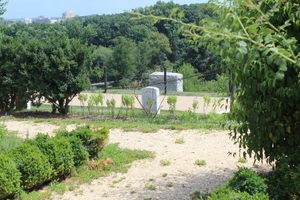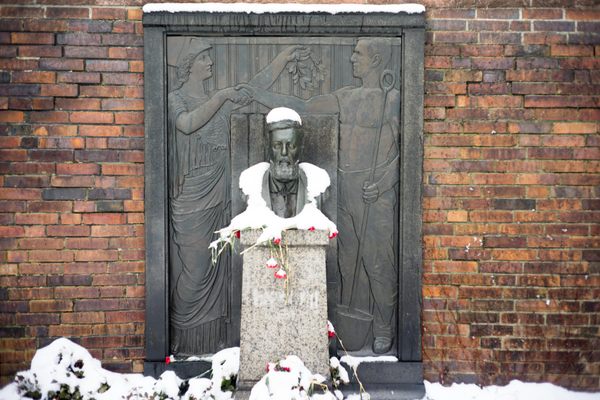About
James Parks is the only person buried in Arlington National Cemetery who was actually born there. He began life as a slave at the Arlington estate, but as a free man continued to work at the cemetery, and upon his death his last request was granted: to be buried where he had labored for so long, a burial that was carried out with full military honors.
Parks was born into slavery in 1843, on what was then the Arlington estate. The estate was owned by George Washington Parke Custis, a Virginia plantation owner, author and playwright who was also the step-grandson and adopted son of George Washington.
Parks, a field slave who rarely saw the inside of the mansion, was 18 at the beginning of the Civil War, and witnessed Union soldiers as they fled from the First Battle of Bull Run. When the soldiers holed up on the grounds of Arlington, Parks helped build Fort McPherson and Fort Whipple. A year later, in 1862, he was freed under the terms of the will left by his former owner, George Washington Parke Custis.
Parks decided to stay at Arlington, and was employed as a builder and gravedigger by the U.S. Army. In 1864, when 200 acres of the Arlington estate were set aside as a cemetery for the Civil War dead, Parks dug the very first graves.
But Parks, respectfully known as “Uncle Jim,” wasn’t just a dutiful and hardworking laborer. He became a vital source of information when, in 1925, Congress decided to restore the mansion and its grounds to their 1861 appearance. He gave locations for the wells, springs, dance pavilion, icehouse, blacksmith shop and kitchens, as well as the old slave quarters and slave cemetery.
Parks’ parents and grandparents were buried in the slave cemetery. Tragically, the Department of Agriculture was busy plowing over the slave cemetery for farmland, even while Parks was helping restore the rest of the estate.
Before he died in 1929, James Parks also left one of the few slave accounts of Arlington House and the Custis-Lee family, and the 63 slaves who had lived and worked there. He also left a sizable family; he had married twice, fathering 22 children.
Parks had always wanted to be buried at Arlington, where he had lived and worked for so long. In the years before his death, an attorney named Enoch Chase began writing letters to the War Department, asking that James Parks be granted approval to be buried in the cemetery. And when Parks died on August 21, 1929, the Secretary of War granted special permission for him to be buried at Arlington, with full military honors.
His grave, which remains a prominent memorial at Arlington, bears the following inscription:
“James Parks, an interesting, respectful, kindly old Negro: Born a slave at Arlington House Estate about 1843. Died Arlington County, Virginia, August 21, 1929. He belonged to George Washington Parke Custis, proprietor of Arlington Estate from 1781 to 1857. "Uncle Jim" lived and worked at Arlington practically the whole of his long and useful life. In appreciation of his faithful service the secretary of war granted special permission to bury his mortal remains in this National Cemetery. Requiescat in Pace.”
Related Tags
Know Before You Go
The James Park grave is located in Section 15 of Arlington National Cemetery, near the perimeter wall between the Selfridge Gate and Garfield Drive.
Community Contributors
Added By
Published
May 16, 2018
Sources
- https://www.npr.org/2014/06/15/322109445/from-former-slaves-to-writers-civilians-too-rest-at-arlington
- https://freetoursbyfoot.com/black-history-of-arlington-national-cemetery/
- https://www.findagrave.com/memorial/6532/james-parks
- https://www.nps.gov/arho/learn/historyculture/parks.htm
- https://www.washingtonpost.com/archive/local/1987/08/27/family-honors-ex-slave-who-made-history/f9d9d601-6b41-425a-a3bf-16c76c9bf7d4/?utm_term=.67f11945efac




























